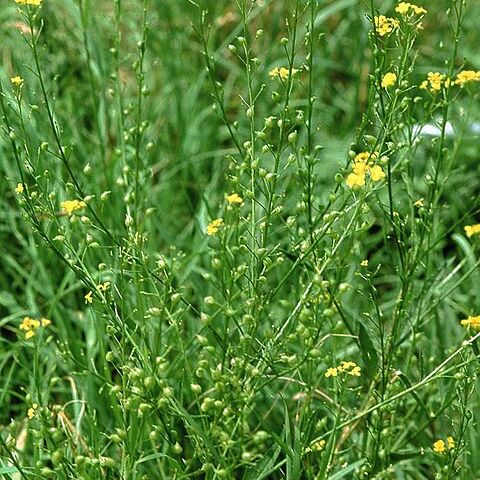Herbs annual, biennial, or perennial with a caudex. Trichomes stalked forked and/or simple; glandular multicellular papillae present or absent. Basal leaves petiolate, often not rosulate, simple, entire, pinnatifid, or lyrate. Cauline leaves sessile or subsessile above, cuneate, attenuate, or auriculate, entire or dentate. Racemes ebracteate, elongated in fruit. Fruiting pedicels divaricate. Sepals oblong, ascending or spreading, base of lateral pair not saccate, margin membranous. Petals yellow or white, ascending, longer than sepals; blade obovate, apex obtuse; claw distinct. Stamens 6, tetradynamous; filaments dilated or not at base; anthers ovate or oblong, obtuse at apex. Nectar glands confluent and subtending bases of all stamens; median glands present. Ovules 2-4 per ovary. Fruit indehiscent, woody, nutletlike silicles, oblong, ovoid, or subglobose, terete, 4-angled, or with 4 cristate wings, sessile, readily detached from pedicel, 1-4-loculed; replum not distinct; septum subwoody or absent; style obsolete or slender and to 6 mm, filiform or subconical; stigma capitate, entire. Seeds wingless, oblong, suborbicular, or ovoid, plump or flattened; seed coat smooth; cotyledons spirolobal.
Sep oblong, ascending; pet yellow (in ours), narrowly oblong, gradually narrowed to the base; short stamens surrounded at base by an annular gland; ovary narrowly ovoid, with 1–2 ovules per locule; fr hard, indehiscent, tapering above into the short style; seeds 1–4, the fr often constricted between them; septum indurate; coarse herbs with large, dandelion-like lvs. 6, Mediterranean, Asia.

